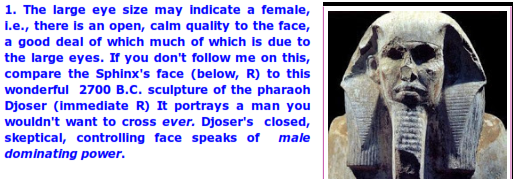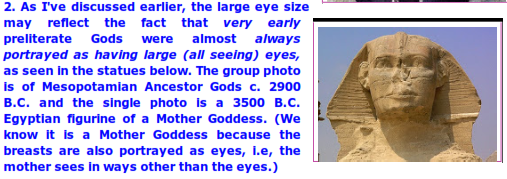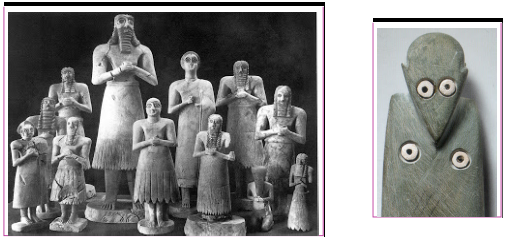2. THE PRELITERATE ARTISTIC CHARACTERISTICS OF THE SPHINX'S FACE.

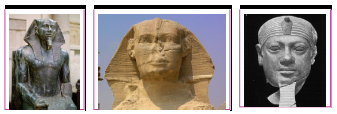
I have placed these on either side of the Sphinx's face so you can see the tremendous difference in facial detail (eyes, lips, ears) and subtlety of expression. I suggest you examine the details very closely. The fact that these sculptures are much smaller than the face of the Sphinx is inconsequential. The Egyptians of 2500 B.C. knew about scaling devices similar to the one used by Gutzon Borglum in converting his small models of Mt. Rushmore to their final monumental size. After all, these were the same Egyptians who built the huge and yet sublimely proportioned Giza pyramids.
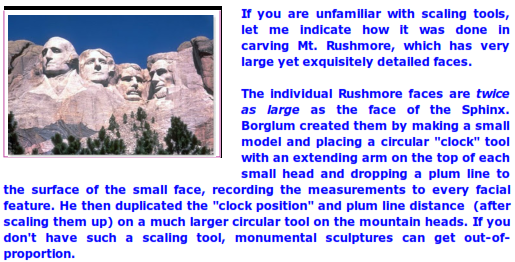

Another important anomaly that has to be accounted for about the face itself is that it is much too square around the jaw and flat-headed on top. Since it is one of my contentions (based on small surviving preliterate carvings) that the Proto-Egyptians understood proportion perfectly and knew how to carve it perfectly, some explanation is necessary.
If I wasn't the keen eyed, obsessive devil I am, I could also easily walk away from this conundrum by attributing the flat head/ large, too square jaw to the rough facial carving techniques c.6000-3200 B.C.. But since I contend that Proto-Egyptian artists understood proportion perfectly, it would be too easy to do this. There are other, more compelling explanations of these two oddities which I will give in a later section.
At this point, however, I want to talk a bit more about the large eyes, as this proportional oddity is the easiest to unravel at this stage. I could explain the eyes in a number of ways:
